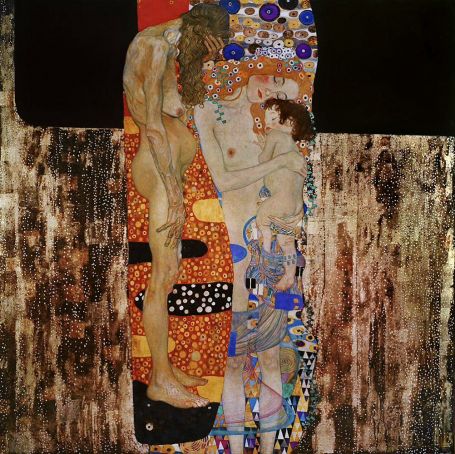The Three Ages of Woman by Klimt is on permanent display in Rome
Painted by Austrian symbolist painter Gustav Klimt in 1905, The Three Ages of Woman has been in the permanent collection of the Galleria Nazionale d'Arte Moderna in Rome since 1912, and is one of only a handful of Klimt works in Italy.
The painting was displayed at an international art exhibition in Rome in 1911, to celebrate the 50th anniversary of the unification of Italy, and won a gold medal.
It was then purchased by the Italian government to add to the collection of the nation's modern art gallery which had moved to its new site in Valle Giulia the same year.

The painting is representative of Klimt's symbolic and allegorical work, and was created in the later career of the artist who died in 1918.
The square canvas symbolises the cycle of female life and the inevitable passage of time, from infancy to motherhood to old age.
The three females are the focal point of the piece, providing a column of colour down the centre of an otherwise dark image.
A young mother cradles her little daughter, both of whom appear to be sleeping, while to their immediate left is a naked older woman, her head bowed and her face screened by a cascade of grey curls.
Some scholars suggest that this stooped, elderly lady may have been inspired by Auguste Rodin's Old Courtesan sculpture, exhibited in Vienna in 1901.
All three figures in the painting are blanketed in colourful decorative motifs, so prevalent in the work of the younger Klimt, who exchanged his gold backgrounds for dark, subdued colours in his later career.
Andy Devane
General Info
View on Map
Klimt in Rome: The Three Ages of Woman
Viale delle Belle Arti, 131, 00197 Roma RM, Italy





















